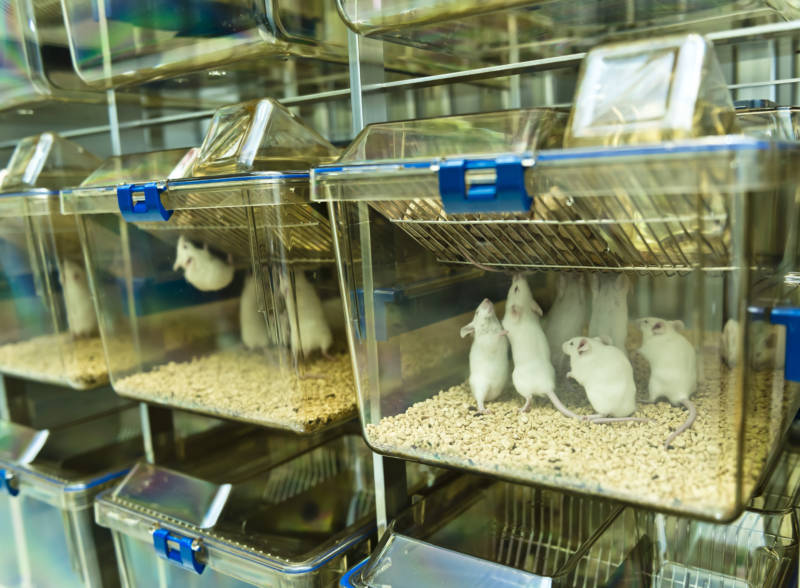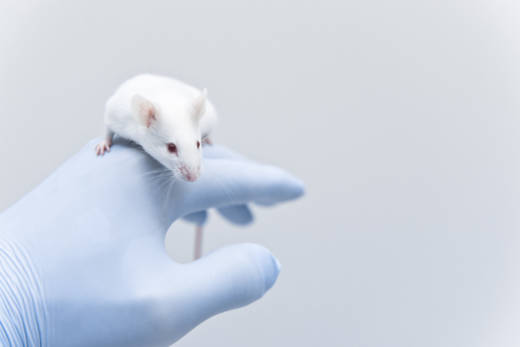After two months of NMN, more blood vessels sprouted in the old mice’s muscles. The density of the smallest vessels — capillaries — became comparable to that of young mice. Blood flow increased, and the animals’ endurance, measured by how long they could run on a treadmill before becoming exhausted, was 56 percent to 80 percent greater than that of untreated old mice: 1,400 feet compared to 780 feet.
The treated mice also benefitted from exercise like mice half their age. In young animals, exercise spurs the creation of new blood vessels and boosts muscle mass, but that effect weakens with age in both people and mice. NMN restored the blood-vessel- and muscle-boosting effects of a good treadmill run, basically “reversing vascular aging in the mice,” said study co-leader David Sinclair of Harvard Medical School.

Opinions differed on how important that is. One expert on the biology of aging said, “So David’s found another molecule that prevents aging?” (Sinclair was a prominent exponent of resveratrol, a compound that slowed aging in mice but proved disappointing in people.) The Jax’s Harrison questioned whether the inbred mice used in the study were representative of humans, who are genetically diverse.
New blood vessels could also be a mixed blessing. They support the growth of tumors, which is why anti-angiogenesis molecules have become cancer drugs. The scientists found no excess cancers in the mice given NMR, but “more study is warranted,” they wrote.
The blood-vessel benefits of NMN didn’t happen if the mice lacked the SIRT1 gene, probably the brightest star in the anti-aging firmament. In the 1990s, it and the six other genes belonging to the family called sirtuins took aging research by storm, as biologists showed that increasing the genes’ activity extended lifespan in yeast, roundworms, and fruit flies by up to 30 percent. When Massachusetts Institute of Technology’s Leonard Guarente, whose lab was sirtuin central, found that the lifespan-extending effect of drastic caloric restriction works by turning up sirtuin genes, it seemed to point the way to slowing aging: Activate sirtuins with a molecule.
That proved easier said than done. Some studies, especially in higher animals, contradicted the simple notion that overexpression of sirtuins translated into longer life. The biggest setback involved resveratrol, a compound found in grapes and wine, which activates the SIRT1 gene. After years of hyperbolic headlines and soaring sales, the resveratrol bubble burst. GlaxoSmithKline bought Cambridge, Mass.-based Sirtris Pharmaceuticals, which Sinclair co-founded in 2004 to develop sirtuin-boosting compounds, for $720 million, but within five years essentially shut it down.
“Resveratrol is very, very good [at activating SIRT1 and extending lifespan] if you’re a mouse,” said Guarente, who cheerfully acknowledges buying a 10-year supply of micronized resveratrol. Most of it is still in his basement. “But the human trials were all over the place, which was unsettling,” he said.
Those failures led scientists to search for other sirtuin-boosting molecules. In 2014, Guarente co-founded Elysium Health, which, for $40 to $60 per month, sells a dietary supplement that boosts NAD+ levels and activates SIRT1. Since levels of NAD+ fall as people age, the hope is that providing the raw material for it will raise those levels, slowing aging. The pills seem to be safe, Guarente and colleagues reported last year, and additional human studies are underway to test whether they benefit health.
Thanks to negative studies, the jury is still out on whether anything related to sirtuins will extend lifespan, but the Cell study offers some hope for extending healthspan. If boosting NAD+ promotes blood vessel formation via SIRT1, it might “rescue muscle mass” that otherwise decreases as blood vessels atrophy, Guarente said. That could prevent the bone loss, frailty, and falls that can be fatal in old age.
“Anything that contributes to muscle health through vascular health is likely to be quite important,” said the Buck Institute’s Verdin, who takes a daily NAD+ precursor.
Sinclair and his team are now studying whether raising NAD+ might also spur the creation of blood vessels in the brain. There and in other organs, said Sinclair, “the lack of oxygen and buildup of waste products” that results from loss of small blood vessels “sets off a downward spiral of disease and disability.” In the brain, that would include vascular dementia.
Sinclair takes NMN to boost NAD+ levels. “In someone my age [49], it’s probably harder to see immediate benefits,” he said, though he said he feels sharper and younger on it. After his 78-year-old father began taking NMN “he started climbing mountains and going whitewater rafting and looking forward to the next five years,” Sinclair said. “It might be psychological, but it isn’t hurting.”
Only rigorous human research can determine that. Metro International Biotech, a Michigan-based startup for which Sinclair consults, just finished a clinical trial of the safety of a proprietary version of NMN and hopes to start a trial of the molecule’s efficacy this year, Sinclair said.
One concern is that boosting sirtuins could backfire. An excess of the molecules, Verdin said, can promote autoimmunity, which causes diseases such as Crohn’s and rheumatoid arthritis.
“That should give us pause about broad claims of what they can do,” he cautioned. “I worry sometimes that [with NAD+-boosting pills already on the market] the field is getting ahead of itself.”


